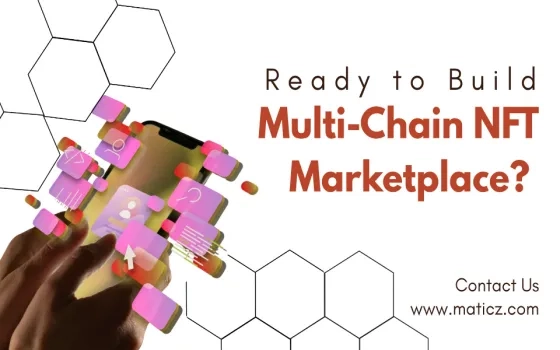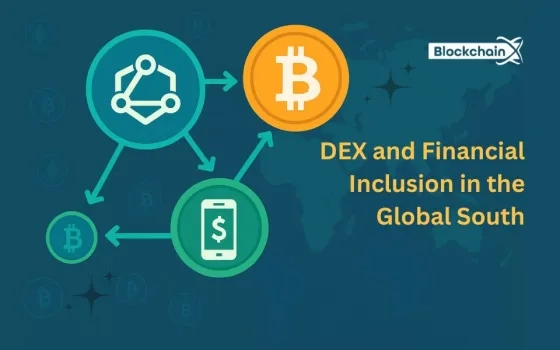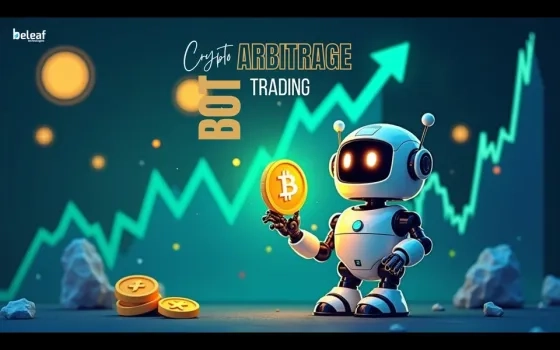The decentralized finance (DeFi) ecosystem has transformed the way people interact with financial systems, offering transparency, inclusivity, and innovation beyond traditional banking. At the heart of this revolution are DeFi tokens digital assets that power decentralized exchanges, lending platforms, staking protocols, and liquidity pools. For startups, developers, and entrepreneurs, building a DeFi token from scratch is more than just a technical endeavor it’s about creating value within an ever-growing ecosystem.
Developing a successful DeFi token requires a thoughtful combination of technology, tokenomics, and a well-planned launch strategy. From choosing the right blockchain platform and programming language to designing sustainable tokenomics that align with community incentives, every step plays a critical role in ensuring long-term success. As we move into 2025, with rising competition and investor scrutiny, projects must go beyond the basics and focus on security, compliance, and community trust. This guide explores the essential steps of creating a DeFi token from scratch covering the tech stack, tokenomics design, and strategies for a successful launch.
Understanding DeFi Tokens
DeFi tokens are the core building blocks of decentralized finance, enabling users to access financial services without relying on banks or intermediaries. These tokens represent more than just digital assets they provide functionality within decentralized ecosystems such as lending, borrowing, staking, yield farming, and liquidity provision. Unlike traditional currencies, DeFi tokens are powered by smart contracts, ensuring transparency, programmability, and trustless interactions among users.
There are different categories of DeFi tokens, each serving a unique purpose in the ecosystem. Governance tokens allow holders to vote on protocol decisions, ensuring community-driven development. Utility tokens provide access to specific features within platforms, while liquidity tokens reward users who contribute assets to decentralized exchanges. Stablecoins, another important class, maintain price stability and serve as a reliable medium of exchange in volatile markets. Together, these tokens not only drive user participation but also sustain the growth and innovation of the DeFi landscape.
Choosing the Right Tech Stack
Selecting the right tech stack is the foundation of successful DeFi token development. The blockchain, programming language, and smart contract framework you choose will directly impact your token’s scalability, security, and adoption. A well-structured tech stack ensures long-term sustainability in an increasingly competitive DeFi market.
1. Blockchain Platform Selection
The first step is deciding on the blockchain network. Ethereum remains the most popular choice due to its vast ecosystem, developer support, and liquidity. However, alternatives like BNB Chain, Polygon, and Solana are gaining traction for their lower transaction costs and higher scalability. Choosing the right chain depends on your project’s goals, target audience, and required features.
2. Programming Language
Once the blockchain is selected, the programming language comes into play. For Ethereum and EVM-compatible chains, Solidity is the most widely used language. Rust is preferred for networks like Solana, while Vyper provides an alternative for Ethereum developers seeking simplicity and security. The choice of language determines the flexibility and robustness of your smart contracts.
3. Smart Contract Frameworks and Tools
Developers rely on frameworks such as Truffle, Hardhat, and Anchor to streamline the smart contract development process. These tools simplify deployment, testing, and debugging while ensuring code efficiency. Integrating auditing tools like MythX or Slither is also crucial to identify vulnerabilities early and prevent security risks.
4. Wallet and Integration Support
A DeFi token must be easily accessible to users through wallets like MetaMask, Trust Wallet, or Phantom. Ensuring compatibility with widely adopted wallets and DeFi platforms boosts adoption and liquidity. Seamless integration with decentralized exchanges (DEXs) and lending protocols further enhances usability and ecosystem growth.
Designing Sustainable Tokenomics
In decentralized finance (DeFi), tokenomics acts as the foundation that determines how your token functions, creates value, and sustains growth. A well-structured tokenomics design balances incentives for users, investors, and developers while ensuring long-term stability. Let’s break down the key elements of designing sustainable tokenomics:
-
Define Utility and Purpose
A DeFi token must have a clear use case whether it powers governance, facilitates transactions, or rewards users. Without real utility, tokens risk being speculative assets with little long-term value. Strong utility ensures user adoption and demand growth.
-
Balance Supply and Demand
Managing token supply through mechanisms like burning, vesting schedules, or capped issuance helps control inflation. Aligning demand drivers such as staking or exclusive access with supply models creates a sustainable economic cycle that supports token value.
-
Incentivize Participation
Reward structures such as staking rewards, liquidity mining, or yield farming encourage active participation in your ecosystem. However, incentives should be designed to prevent short-term exploitation while promoting long-term engagement.
-
Governance and Community Control
Including governance rights within tokenomics empowers users to vote on key protocol decisions. This not only fosters community trust but also strengthens decentralization, ensuring that the project evolves in line with user needs.
-
Plan for Longevity
Sustainable tokenomics must anticipate future challenges, including regulatory shifts, market cycles, and scalability. Planning mechanisms like treasury reserves or adaptive rewards ensures resilience and long-term growth.
Smart Contract Development and Auditing
Smart contracts are the backbone of any DeFi token, automating transactions and ensuring transparency without intermediaries. A well-built contract boosts trust, security, and usability. However, a single vulnerability can lead to catastrophic financial losses, making development and auditing crucial steps in the token creation journey.
-
Writing Robust Smart Contracts
Developing a secure smart contract starts with selecting a reliable programming language such as Solidity (for Ethereum) or Rust (for Solana). The contract should include functions that clearly define supply mechanisms, governance rules, and transaction logic. Writing efficient code minimizes gas fees and prevents unnecessary vulnerabilities, ensuring your token runs smoothly on the chosen blockchain.
-
Ensuring Security with Audits
Smart contract audits are essential to detect vulnerabilities before deployment. Professional auditors use both manual reviews and automated tools to test for potential exploits, such as reentrancy attacks or logic flaws. A thorough audit not only secures investor trust but also signals to the community that your project takes security seriously, creating a stronger foundation for long-term growth.
-
Ongoing Monitoring and Updates
Auditing shouldn’t be treated as a one-time task. After launch, smart contracts require continuous monitoring to adapt to evolving threats and network updates. Regular patching, bug bounty programs, and community-driven testing keep the token secure and functional. This proactive approach helps maintain credibility while protecting user funds.
Strategies for a Successful Token Launch
Launching a token is more than just deploying smart contracts it’s about building momentum, trust, and long-term value. A successful launch requires careful planning, effective marketing, and seamless execution. Without the right strategies, even the most innovative tokens can struggle to gain adoption.
-
Building Hype and Community Engagement
Community is the heart of any token launch. Engaging potential investors through social media, AMAs, and airdrops creates excitement and trust. By fostering a strong and active community before launch, projects ensure there’s already demand and support when the token goes live, boosting adoption and credibility.
-
Strategic Token Distribution
A well-planned token distribution model ensures fairness and prevents market manipulation. Techniques such as presales, IDOs, or fair launches can be used depending on the project’s goals. Balanced allocation between investors, the team, and the community promotes sustainability while preventing centralization risks that could harm long-term trust.
-
Marketing and Partnership Leverage
Successful token launches rely heavily on visibility. Collaborations with influencers, exchanges, and strategic partners help expand reach and attract investors. Coupled with effective PR campaigns, these efforts create a sense of legitimacy and urgency, encouraging wider participation and strengthening the token’s early market presence.
Challenges in DeFi Token Development
Developing a DeFi token goes beyond coding it involves navigating technical, financial, and regulatory complexities. While the potential for innovation is high, projects often face hurdles that can slow growth or damage credibility. Addressing these challenges early is crucial for long-term success.
-
Security and Smart Contract Risks
One of the biggest challenges is ensuring smart contracts are free from vulnerabilities. Hacks, exploits, and coding errors can lead to massive financial losses and reputational damage. Regular audits, bug bounties, and rigorous testing are essential, but maintaining ongoing security in a constantly evolving threat landscape remains a tough task.
-
Regulatory Uncertainty
DeFi operates in a global environment where laws and compliance requirements differ by region. Unclear or changing regulations around securities, taxation, and KYC/AML create uncertainty for developers and investors alike. Striking a balance between innovation and compliance is a major challenge for sustainable token growth.
-
Liquidity and Market Volatility
DeFi tokens often struggle with liquidity issues and extreme price swings in their early stages. Without sufficient trading volume, tokens risk instability and investor hesitation. Incentive mechanisms like liquidity mining can help, but managing long-term stability in a highly volatile crypto market is a continuous challenge.
Future of DeFi Tokens in 2025
The future of DeFi tokens in 2025 looks promising as the sector continues to evolve into a more mature and regulated space. With growing institutional interest and mainstream adoption, DeFi tokens are likely to see greater integration with traditional finance, bridging the gap between decentralized systems and regulated financial infrastructures. Innovations such as cross-chain interoperability, layer-2 scalability solutions, and enhanced governance models will empower DeFi tokens to deliver faster, cheaper, and more secure transactions, attracting both retail and institutional users.
At the same time, DeFi tokens are expected to expand beyond their current use cases of lending, borrowing, and yield farming. By 2025, they could become integral to real-world asset tokenization, decentralized identity solutions, and AI-driven financial ecosystems. Enhanced regulatory clarity will bring more investor confidence, while sustainability-focused models may reduce risks like volatility and liquidity challenges. Overall, DeFi tokens are poised to play a pivotal role in shaping the future of decentralized finance and redefining the global financial landscape.
Conclusion
Creating a DeFi token from scratch is both a technical challenge and a strategic opportunity. With the right tech stack, developers can ensure the token’s scalability, security, and interoperability. Pairing this with well-structured tokenomics not only sustains user adoption but also strengthens trust, aligning community incentives with project growth. A token is more than just code it represents the backbone of an entire ecosystem.
As DeFi continues to evolve in 2025, projects that focus on transparency, compliance, and long-term sustainability will stand out. The combination of robust technology, fair tokenomics, and a community-first launch strategy can transform an idea into a thriving ecosystem. For entrepreneurs, developers, and investors looking to dive into the DeFi space, mastering these fundamentals will pave the way for success in the ever-expanding decentralized financial landscape.













